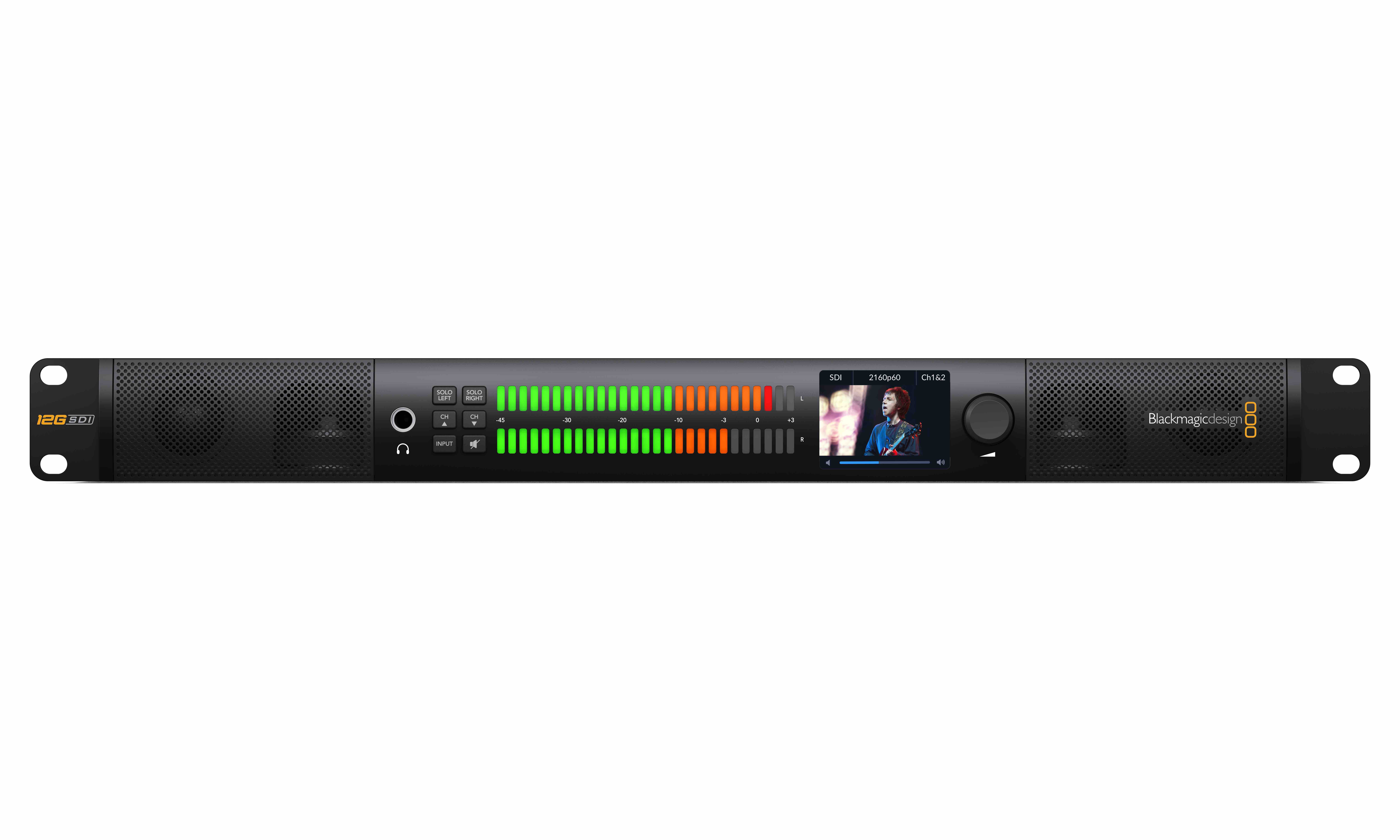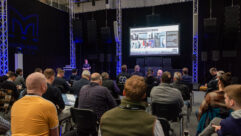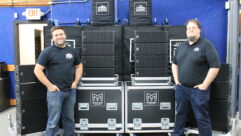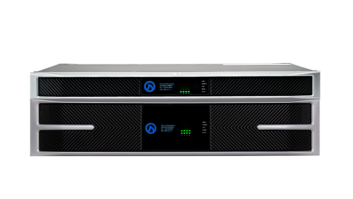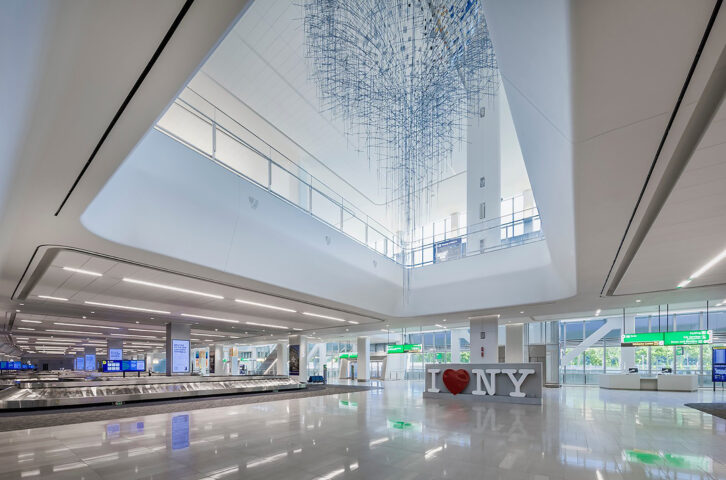
After six years of construction, LaGuardia Airport in Queens, New York, finalized its new 1.3 million-square-foot Terminal B in 2022 as part of a comprehensive upgrade plan. The terminal opened in phases beginning in 2018 and offers a world-class experience that includes spacious interiors, floor-to-ceiling windows, a 3,000-car parking garage, new covered and convenient pickup facilities for both taxis and ride-sharing vehicles, and dual sky bridges above active taxiways. Managed by the Port Authority of New York, New Jersey Port Authority and LaGuardia Gateway Partners, Terminal B has received multiple awards for excellence, including the United Nations Educational, Scientific and Cultural Organization’s (UNESCO) highly-competitive and prestigious 2021 Prix Versailles award for the world’s best new airport and the National Academy of Construction’s Special Achievement Award, among others.
The terminal required an audio and mass communications system to match its world-class aspirations as part of the upgrade. With passenger safety a priority, the updated terminal presented an opportunity to reimagine its communications, and the airport’s team of engineers, architects and audiovisual consultants turned to a company and technology it had extensive experience with, AtlasIED and its GLOBALCOM® communications platform.
Acoustic Modeling for Successful Outcomes
Since 2016, LaGuardia Airport has been using AtlasIED GLOBALCOM to provide communications throughout its existing terminals. While GLOBALCOM was already tried and tested at LaGuardia, the Port Authority needed to ensure it designed the new Terminal B audio system to specific code requirements for speech intelligibility and audibility. Early in the project, it sought the help of the acoustical consultant firm of Cerami & Associates to model the acoustics in the facility well before the first passengers walked the concourse.
Transportation hubs like LaGuardia must meet NFPA 72 audibility and intelligibility fire codes. These codes apply to any communications systems that deliver live or pre-recorded messages. According to NFPA 72, “public mode signaling” is required to provide and maintain a sound pressure level of 15 decibels (dBA) above ambient sound levels.
During the design phase of Terminal B, Cerami & Associates conducted acoustic modeling tests in the high passenger volume areas, including the concourse, ticketing gates, pedestrian bridge and baggage claim to ensure they met NFPA 72 code requirements for audio but also make them as welcoming as possible. Using advanced software programs and architectural renderings of the terminal, Cerami was able to determine the appropriate quantity, size and placement of loudspeakers for effective coverage throughout all Acoustically Distinguishable Spaces (ADS).
“The acoustical modeling tests we perform determine where we may experience issues and allow us to address them beforehand,” said Justin Lau, Associate Principal at Cerami & Associates. “Intelligibility was not just something that was desired. Building codes require it, and if any zone in an environment fails, we could reconfigure the layout or add more loudspeakers and address the issue before any work starts.”
Creating Mass Communications Continuity in Terminal B
For the expansion, airport management wanted to maintain continuity with the rest of the airport and chose AtlasIED GLOBALCOM based on its previous adoption and success with the platform. Installing a system the airport had already relied upon would not only help operations teams because they were familiar with the technology, it would also simplify the training of the personnel across the airport who would use the communications stations across the airport for communications.
The AV implementation team chose the AtlasIED TitanONE T112 smart mainframe power amplifiers to provide signal automation, processing and amplification in a single modular solution. When fully populated with amplifier cards, it offers 12 main channels of amplification and two backup channels for redundancy. If an amplifier card fails, the digital signal processing is automatically switched to the backup amplifier card.
In addition, the terminal includes numerous Dante-enabled GLOBALCOM microphone stations at gates and ticket counters including the GLOBALOM.IP Digital Microphone stations while AtlasIED loudspeakers including the FAP43T and FAP63T in-ceiling and SM82T surface mount loudspeakers provide sound throughout the concourse.
Connecting Mass Communication with Airport Fire Evacuation Systems
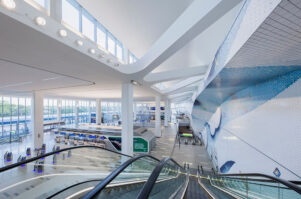
LaGuardia Terminal B was not only intended to modernize the aesthetics and amenities, but also offered the opportunity to reimagine the operational processes and systems in place. The airport wanted to reduce the number of communication systems and requested the project team find creative ways to consolidate them, so AtlasIED partnered with the AV team to integrate the GLOBALCOM system with the airport fire evacuation and alarm system. In previous installations, these were discrete systems managed by different vendors and user groups. By integrating these systems, they were able to streamline the installation process and better coordinate communications activities with passengers.
The Authority Having Jurisdiction (AHJ) required Class A pathways for the fire alarm system, meaning that circuits will have a pair of wires going out from the panel, through all devices, and returning to the panel to a separate set of terminals. The redundancy of a Class A pathway allows it to perform under more adverse conditions. For example, all devices on the pathway will continue to operate with a single open. For the AtlasIED equipment, this involved a line monitor on every loudspeaker with 50 percent redundancy required. The TitanONE power amplifiers can combine and separate power to create redundancy and are equipped with battery backup in the event of electrical mains failure.
“The integration of a fire alarm and mass communication system is complex, but the GLOBALCOM platform helped simplify the installation while also providing additional redundancy the project required,” said Ed Cox, Senior Systems Specialist, AtlasIED. “Safety is paramount in projects such as the LaGuardia renovation, and it’s gratifying to see AtlasIED products help facility personnel react and respond faster when issues arise.”
As the doors opened to the new LaGuardia Terminal B in 2020, it was evident that the teams paid special attention to creating a clean appearance and maintaining the desired architectural aesthetics, aided by the unobtrusive AtlasIED in-ceiling loudspeakers. In addition, acoustic modeling helped airport managers create a safer building due to increased speech intelligibility in the overhead paging. Passengers visiting this world-class terminal can now hear audio and receive instructions from airport personnel with greater clarity, directing them to the right gates and areas, connecting passengers with airport staff when needed, and creating an overall more comfortable and enjoyable experience.


